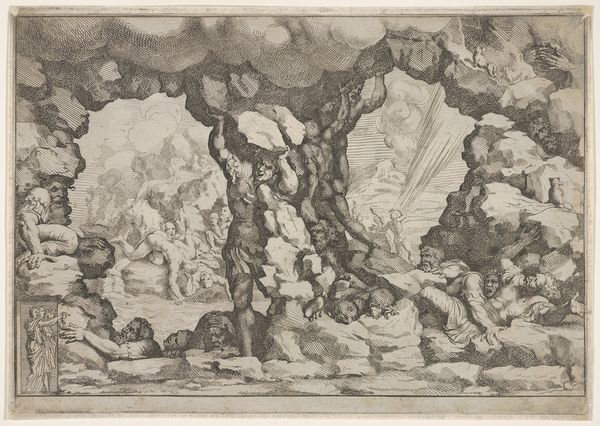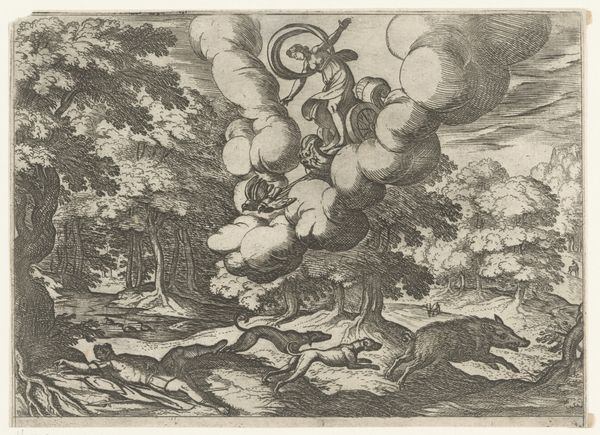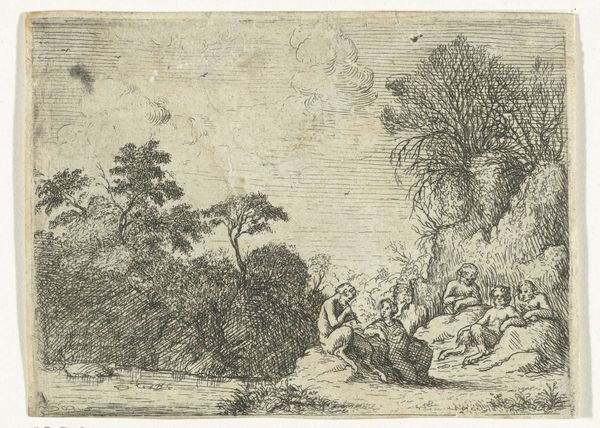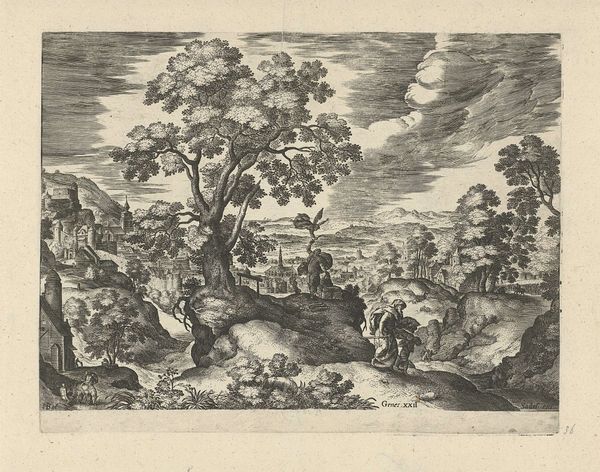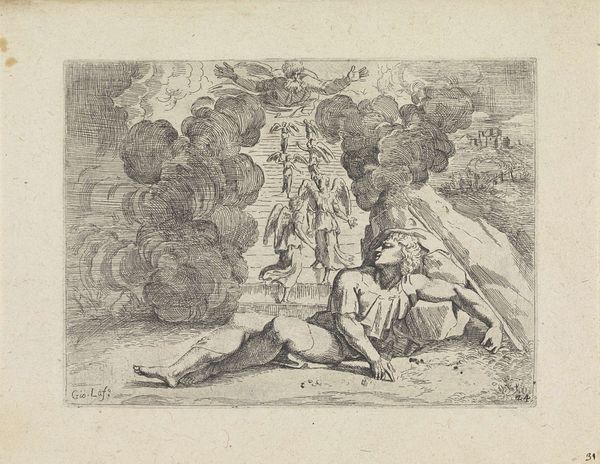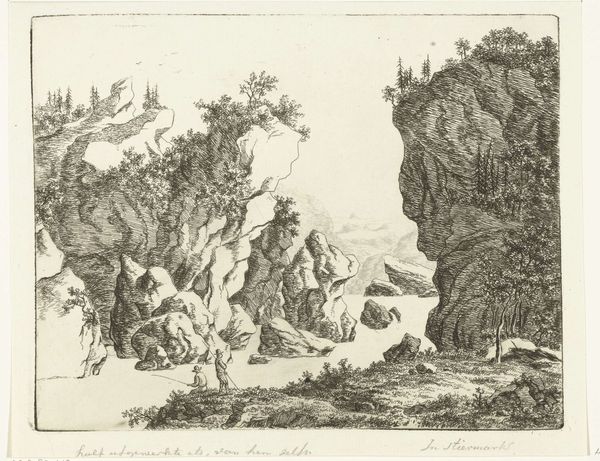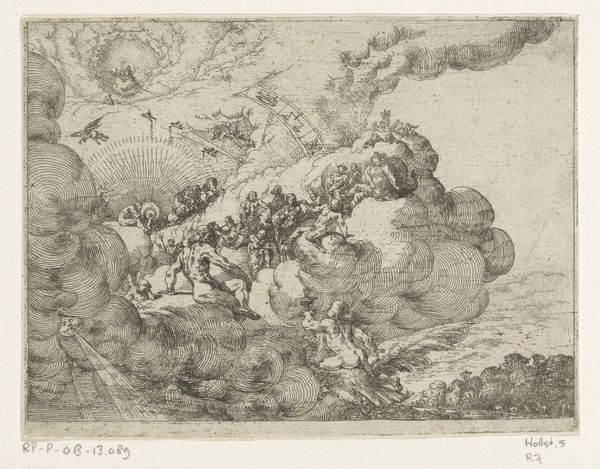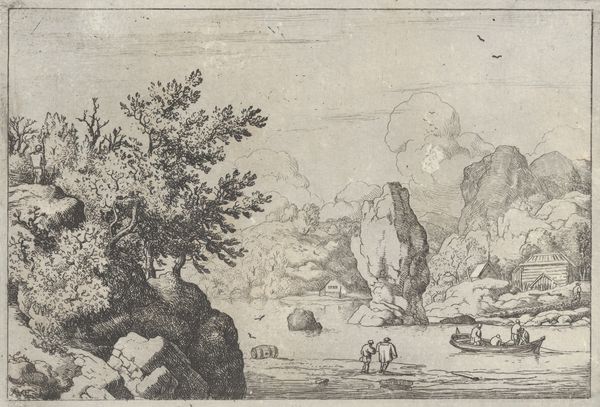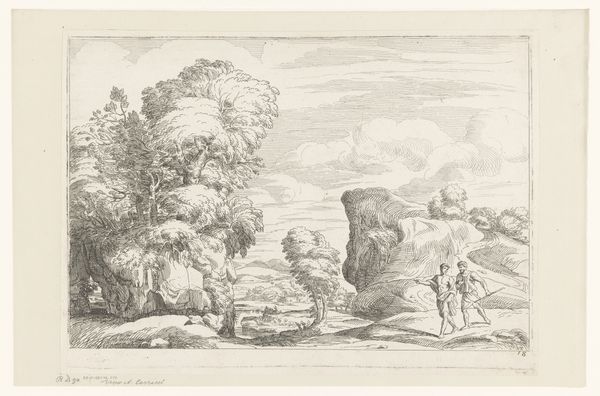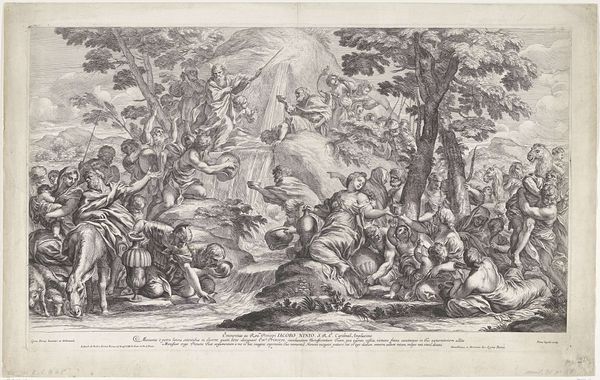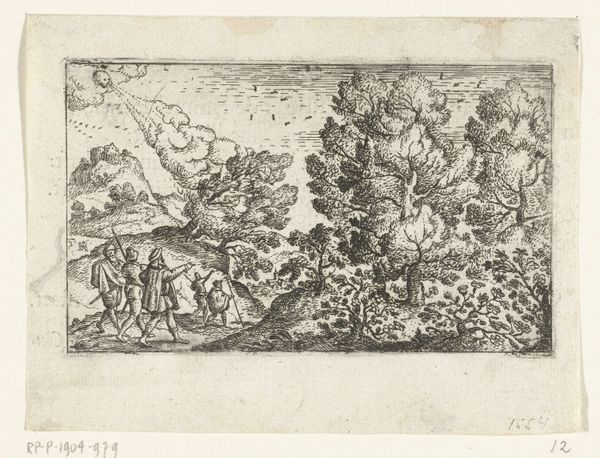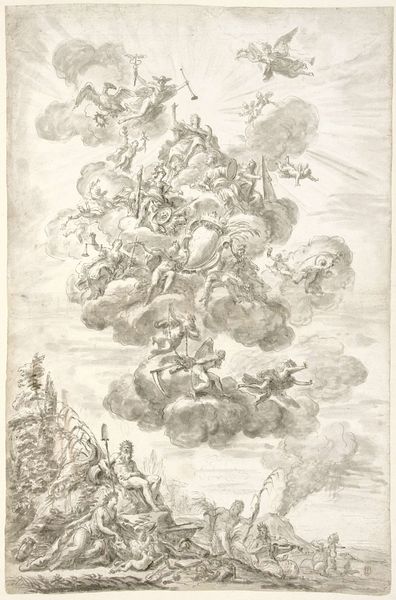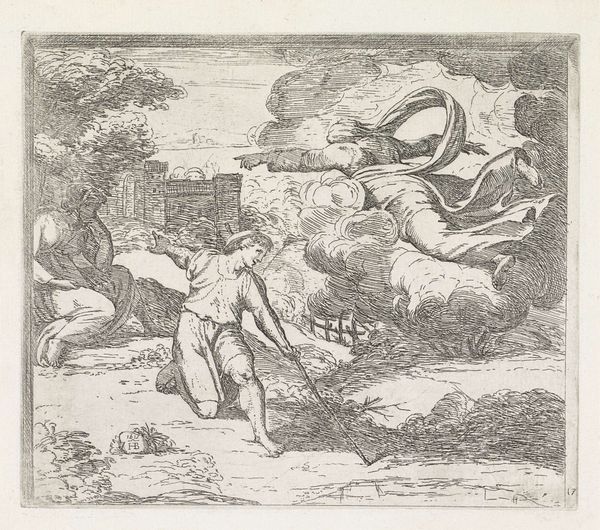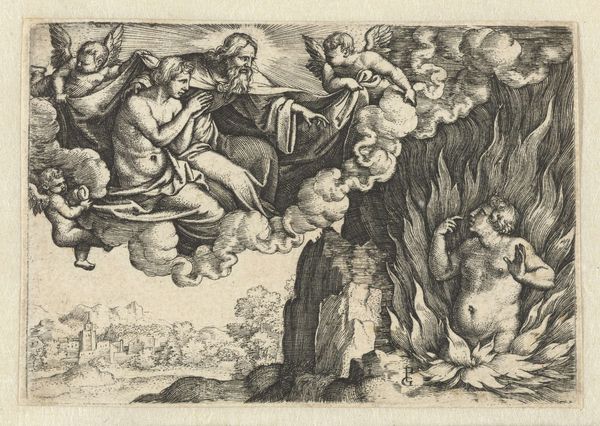
#
light pencil work
#
pen drawing
#
mechanical pen drawing
#
pen illustration
#
pen sketch
#
pencil sketch
#
old engraving style
#
pen-ink sketch
#
pen work
#
pencil art
Dimensions: height 145 mm, width 235 mm
Copyright: Rijks Museum: Open Domain
Curator: I'm immediately struck by the intense light emanating from the upper portion of the image. It feels like a divine spotlight on the figures depicted. What do you think? Editor: Absolutely. The ethereal quality immediately captures the eye, a scene of drama set against the jagged rocks below. I see both power and vulnerability in the figures. Shall we introduce it? This pen illustration, "De verschijning van Apollo", attributed to Jan van Ossenbeeck and created sometime between 1663 and 1674, is an example of meticulous pen work that really encapsulates the Dutch Golden Age. Curator: Right, it depicts a scene steeped in classical mythology, likely Apollo arriving in his sun chariot. It makes me wonder, how did the patrons of that era view representations of power? Was it celebration, or a warning, even? Editor: That's an important consideration. Representations like these were deeply intertwined with the ruling class. Seeing Apollo presented like this allows an interpretation of how power and authority were constructed through art. Curator: Indeed. And Apollo’s dramatic appearance certainly reinforces his importance within that power dynamic. Note how he quite literally overshadows the human figures in the foreground. Editor: Exactly, the hierarchy is unmistakable. It's a moment suspended in time, yet also a clear articulation of a societal order. I also see undertones related to patriarchal society because, if we remember well, myths often serve to legitimize cultural practices and maintain established gender norms. How might those who experienced powerlessness – women, the poor, enslaved peoples – interpret an image like this? Curator: It’s important to also acknowledge these images, commissioned as they were, actively participate in consolidating these inequalities. Ossenbeeck likely wouldn't have been explicitly political. How images become part of larger, unequal systems of representation is crucial. Editor: And considering it in modern times also begs an important conversation about our society's complex and nuanced approach to identity and race. Images from centuries past invite viewers to explore themes of oppression, equality, or cultural differences that persist in society even today. Curator: A worthwhile reminder to reflect. Overall, considering this 17th-century piece prompts discussion about how displays of strength relate to historical context and evolving perceptions of power. Editor: A valuable piece that reflects its time while allowing dialogue to transcend the boundaries of time.
Comments
No comments
Be the first to comment and join the conversation on the ultimate creative platform.
